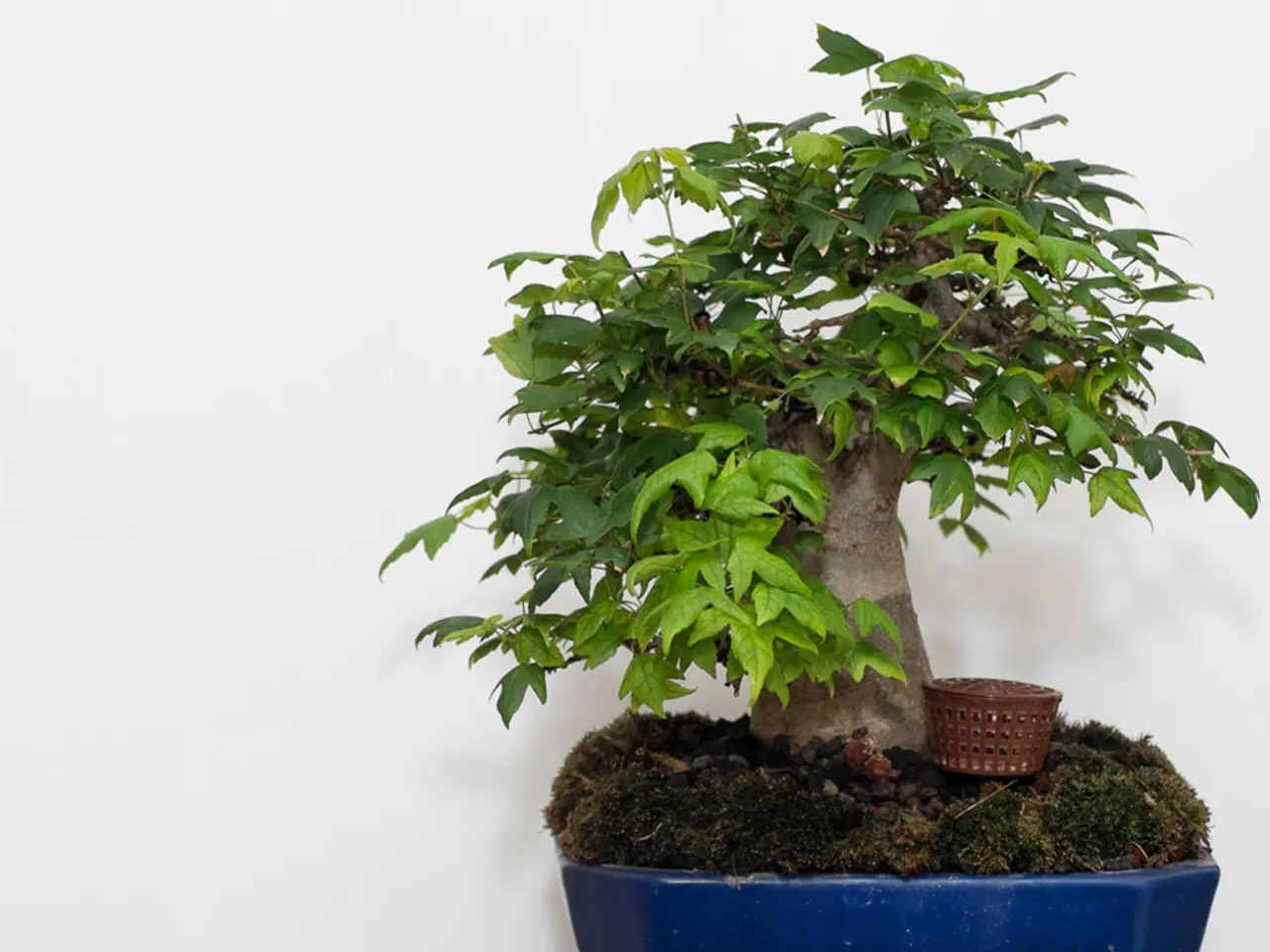Bonsai and Artificial Intelligence: The Evolution of Nurturing and Innovation in Design
In the world of bonsai, an age-old art form that requires meticulous care and precision, the introduction of artificial intelligence (AI) is bringing about a modern revolution. AI is now playing a significant role in transforming bonsai care from a manual, experience-driven craft into a scalable, optimized practice.
One of the most exciting developments is the use of AI for precision care and health monitoring. AI-driven technologies, such as Bonsai Robotics, employ vision-based systems to monitor plant health, soil conditions, and environmental factors. By relying less on GPS or cellular networks, these systems allow for continuous, autonomous care tailored to each tree's unique needs. This results in improved watering accuracy, pruning schedules, and fertilization, leading to healthier trees [1][5].
AI is also making strides in automating routine bonsai care operations. AI platforms can automate tasks like trimming, watering, and shaping by integrating robotics with machine vision and planning software. This increased efficiency could translate to significant benefits for bonsai horticulture, as similar benefits have been seen in related agricultural contexts, with automation increasing efficiency by up to 60% [1].
The design and styling of bonsai trees are also being enhanced by AI. AI-powered 3D modeling and visualization tools help bonsai designers preview different shapes and styles digitally before applying physical wiring or pruning. This accelerates decision-making and refines artistic design with less trial and error [5].
Moreover, AI is providing hyper-targeted care recommendations based on data collected and analyzed on species-specific growth patterns, sunlight requirements, watering regimes, and environmental stressors. This data-driven customization enhances growth quality and tree aesthetics [2][5].
AI is also aiding the bonsai industry by profiling customer preferences for tree styles, budgets, and sustainability concerns. This allows growers and sellers to better tailor their offerings and marketing strategies to meet the needs of their customers [5].
In addition, AI-optimized watering schedules adjust to real-time environmental data and unique tree characteristics. AI-powered tools can also analyze vast amounts of data, including visual characteristics, growth patterns, and environmental factors, to provide accurate identifications of bonsai species [5].
AI-generated design suggestions reveal novel aesthetic possibilities tailored to each tree's unique characteristics. These suggestions can be tailored to a specific tree's unique characteristics, such as its species, age, and growth patterns, ensuring that the aesthetic vision is perfectly aligned with the tree's natural attributes [4].
AI-powered systems can serve as virtual coaches, guiding individuals towards mastery of this ancient art form. They can offer bespoke advice on tree care, styling, and maintenance, tailored to an individual's unique needs and skill levels [3].
AI-driven insights are being used to refine bonsai potting techniques, including soil composition, pot material, drainage, tree species, and climate considerations. Predictive pruning with machine learning forecasts ideal cutting patterns and timings to achieve desired shapes and sizes [6].
AI-generated virtual bonsai trees can be used for practice and training, allowing enthusiasts to hone their skills, experiment with designs, and explore different techniques in a simulated environment. AI-assisted plant health diagnostics scrutinize visual and environmental data to identify anomalies and potential problems [3].
Lastly, AI can identify subtle changes in a tree's appearance, behavior, and environmental conditions, allowing for early intervention and targeted treatment against pests and diseases. AI-powered systems can provide bonsai enthusiasts with actionable insights into their trees' health, enabling proactive measures to prevent disease, pests, and nutrient deficiencies [2].
In essence, AI blends horticultural artistry with precise agricultural engineering, transforming bonsai care into a practice supported by automation, sensing, and predictive analytics. This promises healthier trees, more sophisticated designs, and expanded accessibility for enthusiasts and commercial growers alike [1][5][2].
[1] "AI and Bonsai: The Future of Bonsai Care" - Bonsai Focus Magazine [2] "The Role of AI in Modern Bonsai" - Tree Trends Magazine [3] "Bonsai Revolution: The Impact of AI on the Art Form" - The Botanist [4] "AI-Powered Bonsai Design: A New Era of Artistry" - Artificially Intelligent Design [5] "Transforming Bonsai Care with AI: A Comprehensive Guide" - AI in Horticulture Journal [6] "Predictive Pruning in Bonsai: A Machine Learning Approach" - Journal of Applied AI in Agriculture
- The AI-powered tool can analyze visual characteristics, growth patterns, and environmental factors to provide accurate identifications of bonsai species.
- AI-driven insights are being used to refine bonsai potting techniques by predicting ideal soil composition, pot material, drainage, tree species, and climate considerations.




